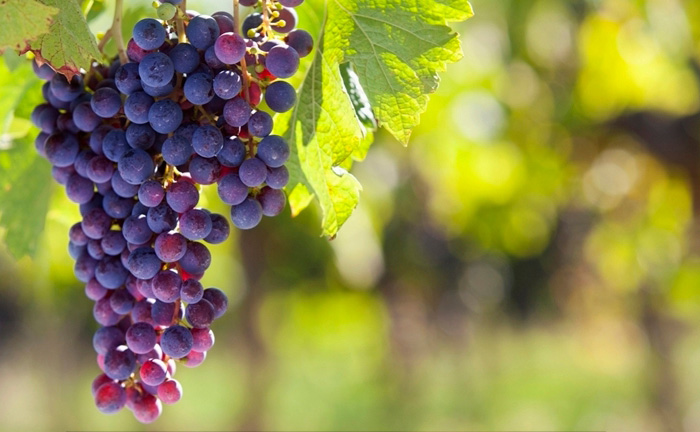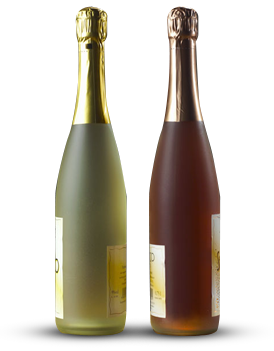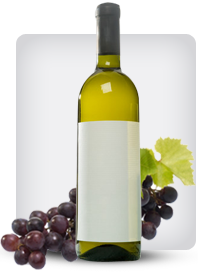

Tag: Decant
How to Decant Merlot Properly: A Guide to Unlocking Its Full Potential Merlot, with its plush texture and approachable profile of plum, cherry, and chocolate notes, is one of the world’s most beloved red wines
Posted onWhile often enjoyed straight from the bottle, taking the time to decant a Merlot can dramatically elevate the experience. Decanting serves two primary purposes: separating the wine from any sediment and, more importantly, aerating it to unlock its full aromatic and flavor potential. Whether you have a youthful, fruit-forward bottle or a mature, complex vintage, proper decanting is a simple yet transformative ritual.
Why Decant Merlot?
* Aeration (Breathing): When wine is exposed to oxygen, a process known as oxidation occurs. This softens harsh tannins, allows subtle aromas to blossom, and integrates the flavors, making the wine taste smoother and more balanced. Young Merlots benefit greatly from this softening, while older ones revive their dormant aromas.
* Separating Sediment: Older Merlot (typically 8-10 years or more) can develop natural sediment—harmless tartrate crystals and phenolic compounds. Decanting leaves this gritty residue behind, ensuring a clear, pleasant glass.
What You’ll Need
1. The Bottle of Merlot
Any clean vessel with a wide base works. The broad surface area maximizes contact with air.
A candle, flashlight, or simply a white background (like a piece of paper) against a bright room.
4. A Steady Hand (or a wine funnel)
The Step-by-Step Process
Step 1: Stand the Bottle Upright
If dealing with an older Merlot (7+ years), stand the bottle upright for 24-48 hours before decanting. This allows the sediment to settle at the bottom. For younger wines, this step is optional.
Step 2: Prepare Your Tools
Ensure your decanter is clean, dry, and free of any detergent smells. Have your light source ready.
Step 3: Open and Smell
Remove the capsule and cork carefully. Pour a small taste into a glass to assess the wine’s initial state. This gives you a “before” benchmark.
Step 4: The Decanting Pour
* For Older Merlot (with sediment): Hold the decanter in one hand and the bottle in the other. Position the light source so it shines through the neck of the bottle. Pour the wine in a single, slow, steady stream into the decanter. Watch the neck of the bottle closely. The moment you see the first traces of dark sediment approaching the shoulder, stop pouring. Leave the last ounce or two with the sediment behind.
* For Younger Merlot (for aeration only): You can be less ceremonial. Pour the wine swiftly and directly into the decanter, even creating a splash to encourage oxygenation.
Step 5: The Waiting Game (The Most Crucial Step)
Let the wine breathe in the decanter. The duration is not one-size-fits-all:
* Young, Inexpensive Merlot: 30 minutes to 1 hour is often sufficient.
* High-Quality, Youthful Merlot (e.g., from Bordeaux or Napa): 1 to 2 hours can work wonders.
* Mature, Complex Merlot: Start tasting after 30 minutes. It may open quickly and be best enjoyed within the hour to preserve its delicate, evolved character.
Tip: Taste every 20-30 minutes. The evolution is part of the pleasure. When the aromas feel open and the texture smooths out, it’s ready.
Serving Your Decanted Merlot
Once decanted, serve the wine at its ideal temperature—around 60-65°F (15-18°C). Pour it back into the clean, original bottle for serving if you wish, or simply serve directly from the decanter. Enjoy it with food pairings like roast chicken, mushroom dishes, or hard cheeses to complement its character.
Common Mistakes to Avoid
* Over-Decanting: Especially for older wines, too much air can cause the flavors to flatten and fade. Don’t leave a delicate 15-year-old Merlot in a decanter for three hours.
* Using a Dirty Decanter: Residual smells are the enemy of wine aromatics.
* Decanting All Reds the Same Way: A light Pinot Noir needs less time than a bold Cabernet or Merlot. Adjust based on the wine’s body and age.
Conclusion
Decanting Merlot is less about strict rules and more about understanding the wine in your glass. It’s a simple act of care that bridges the gap between simply drinking and truly savoring. By allowing your Merlot to breathe, you’re not just serving wine—you’re awakening it, revealing the depth and craftsmanship that went into every bottle. So, the next time you open a Merlot, take a few extra minutes to decant. Your palate will thank you.
How to Decant Merlot Properly: A Guide to Unlocking Complexity
Posted onMerlot, with its signature plush texture and notes of dark cherry, plum, and chocolate, is one of the world’s most beloved red wines. While often approachable in its youth, a proper decanting can transform a good bottle of Merlot into a truly great one. Decanting serves two primary purposes: to separate the wine from any sediment and, more importantly, to aerate the wine, allowing it to “breathe” and express its full aromatic and flavor potential. This guide will walk you through the simple yet impactful process of decanting Merlot like a sommelier.
Why Decant Merlot?
Not all Merlots require decanting, but understanding when and why to do it is key.
- Young Merlot (Aged 1-5 years): The primary reason for decanting a young Merlot is aeration. Exposure to oxygen helps soften firm tannins, integrate oak influences, and unlock the wine’s vibrant fruit and secondary aromas, making it smoother and more expressive on the palate.
- Aged Merlot (Aged 8+ years): With older vintages, the goal shifts. These wines often throw sediment—harmless tartrate crystals and phenolic compounds—that can taste bitter and gritty. Decanting carefully separates this sediment from the clear wine. Aeration for an aged Merlot is typically brief, as its complex bouquet can be fragile and dissipate quickly.
What You’ll Need
- One bottle of Merlot
- A decanter (any style will work)
- A light source (a candle or flashlight)
- A corkscrew
The Step-by-Step Decanting Process
Step 1: Stand the Bottle Upright
If you are decanting an older Merlot (8+ years), stand the bottle upright for 24-48 hours before opening. This allows the sediment to settle at the bottom. For young Merlots, this step is unnecessary; you can proceed directly to decanting.
Step 2: Prepare Your Workspace
Have your decanter clean, dry, and within easy reach. For aged wines, position your light source (a candle is traditional, but a bright flashlight is more practical) directly behind the neck of the bottle. This will illuminate the wine as you pour, allowing you to see the sediment.
Step 3: Open and Pour with Confidence
Remove the capsule and cork cleanly. Now, begin pouring the wine into the decanter in a single, steady, and moderate stream. Hold the bottle over the light source. The key is to pour confidently without hesitation, which helps prevent dribbling.
Step 4: Watch for Sediment (For Aged Wines)
As you pour, keep your eyes fixed on the shoulder of the bottle where it meets the neck. The clear wine will flow through the light, but as you near the end, you will see a dark, cloudy trail of sediment begin to approach the neck. The moment you see this, stop pouring. It’s better to leave a small amount of wine with the sediment than to taint the entire decanter.
Step 5: Let it Breathe
Once the wine is in the decanter, the aeration process begins. The wide base of the decanter maximizes the wine’s surface area exposed to air.
- Young, Bold Merlot: Let it breathe for 30 minutes to 2 hours. Taste it every 20-30 minutes to see how it evolves.
- Older, Delicate Merlot: 15-30 minutes is often sufficient. Over-aerating can cause its nuanced aromas to fade.
How Long Should Merlot Breathe?
| Wine Profile | Recommended Decanting Time |
| Young, Inexpensive Merlot | 20 – 45 minutes |
| Young, High-End Merlot (e.g., from Bordeaux or Napa) | 1 – 2+ hours |
| Aged Merlot (8+ years) | 15 – 30 minutes |
Ultimately, the best judge is your own palate. Decanting is not an exact science, but a tool for personal enjoyment.
Conclusion: The Reward of Patience
Decanting Merlot is a simple ritual that pays significant dividends. By taking a few extra minutes to aerate your wine, you encourage it to shed its initial shyness and reveal the depth, harmony, and complexity the winemaker intended. Whether you’re enjoying a casual weeknight bottle or a prized library vintage, proper decanting ensures your Merlot is experienced at its absolute best.
How to Decant Syrah Properly: Unlocking a Bold Red’s True Potential
Posted onSyrah (also known as Shiraz) is a wine of power, complexity, and profound character. From the peppery, smoky notes of the Northern Rhône to the rich, jammy profiles of Australia and California, this bold red often benefits immensely from a crucial pre-service ritual: decanting. Done correctly, decanting can transform a good bottle of Syrah into an extraordinary one by softening its tannic structure and unleashing its full aromatic bouquet. This guide will walk you through the art and science of decanting Syrah to ensure you experience the wine at its absolute best.
Why Decant Syrah?
Decanting serves two primary purposes for a wine like Syrah:
- Aeration (Breathing): Exposure to oxygen helps to soften the often robust and grippy tannins inherent in Syrah, making the wine feel smoother and more approachable on the palate. Simultaneously, aeration coaxes out the complex secondary and tertiary aromas—unlocking notes of dark fruit, violet, black pepper, leather, and earth that may have been dormant in the bottle.
- Separation (Sediment): Older Syrahs, particularly those aged for eight years or more, often throw sediment—harmless tartrate crystals and phenolic compounds that can taste bitter and gritty. Decanting allows you to separate this sediment from the clear wine, ensuring a pristine drinking experience.
What You’ll Need
- A decanter (any clean vessel with a wide base to maximize surface area will work)
- The bottle of Syrah
- A light source (a candle or a bright flashlight)
- A steady hand
The Step-by-Step Decanting Process
Step 1: Stand the Bottle Upright
If you are decanting an older Syrah (8+ years) for sediment, stand the bottle upright for 24-48 hours before opening. This allows the sediment to settle at the bottom. For younger, robust Syrahs meant primarily for aeration, this step is less critical, and you can proceed immediately.
Step 2: Open and Smell
Open the bottle carefully. Pour a small taste into a glass to assess the wine’s initial state. This gives you a baseline for how the decanting process changes the wine.
Step 3: The Pour
Hold the decanter in one hand and the bottle in the other. Position your light source behind the neck of the bottle. Pour the wine into the decanter in a single, steady, moderate stream. Watch the wine as it flows through the neck of the bottle.
Step 4: Watch for Sediment
As you near the bottom of the bottle, look through the neck at the light source. The second you see the first traces of dark, grainy sediment approaching the shoulder, stop pouring immediately. The goal is to leave the sediment (about an ounce of wine) behind in the bottle.
Step 5: Let it Breathe
Once decanted, let the wine sit. The duration depends on the wine’s profile:
- Young, Tannic Syrah (under 5 years): Can benefit from 1 to 2 hours of decanting. These powerful wines need significant time for their tannins to unwind.
- Mature Syrah (5-12 years): Typically requires 30 minutes to 1 hour. The goal is to open up the aromas without causing the more delicate flavors to fade.
- Very Old Syrah (12+ years): Decant for a very short time—only 15 to 30 minutes, or simply double-decant (pour into a decanter and immediately back into the bottle). These wines are fragile and can “fade” quickly with too much oxygen.
Final Tips for Success
- Don’t Over-Decant: It is possible to give a wine too much air, causing its fruit flavors to oxidize and flatten. When in doubt, taste the wine every 20-30 minutes to monitor its evolution.
- Temperature Matters: Serve your decanted Syrah at a cool room temperature, around 60-65°F (15-18°C). Serving it too warm will accentuate alcohol, while too cold will mute its flavors.
- Trust Your Palate: The recommended decanting times are guidelines. The ultimate judge is your own taste. The process is complete when the wine tastes smooth, aromatic, and harmonious to you.
By taking the time to decant your Syrah properly, you are not just serving a drink—you are curating an experience. You are honoring the winemaker’s craft and allowing the wine to tell its complete story, one sublime sip at a time.
How to Decant Syrah Properly
Posted onDecanting Syrah—or any bold red wine—can significantly enhance its aroma, flavor, and overall drinking experience. This full-bodied grape variety, known for its dark fruit, spice, and earthy notes, often benefits from aeration to soften tannins and unlock its complexity. Follow these steps to decant Syrah like a sommelier.
Why Decant Syrah?
Syrah (also called Shiraz in some regions) is a tannic, deeply concentrated wine that can be tight when first opened. Decanting serves two key purposes:
- Aeration: Exposure to oxygen helps soften harsh tannins and integrates flavors.
- Sediment Separation: Older Syrahs may develop sediment; decanting ensures a smoother pour.
Step-by-Step Decanting Guide
1. Choose the Right Decanter
Opt for a wide-bottomed decanter to maximize surface area for aeration. A classic crystal or glass decanter works best.
2. Stand the Bottle Upright
If the Syrah is aged (5+ years), let it stand upright for 24 hours to allow sediment to settle at the bottom.
3. Open and Pour Slowly
Hold the decanter at a slight angle and pour the wine steadily. Stop when you see sediment near the bottle’s neck—use a light source (like a candle) to check.
4. Let It Breathe
Young Syrah (under 5 years): Decant for 30–60 minutes.
Aged Syrah (5+ years): Decant for 15–30 minutes to avoid over-oxidation.
5. Serve and Enjoy
Pour the wine into glasses, leaving any remaining sediment in the decanter. Savor the enhanced aromas and smoother texture.
Pro Tips
- Decant younger, robust Syrahs longer to tame their intensity.
- Use a wine funnel with a filter for extra sediment control.
- Serve decanted Syrah slightly below room temperature (16–18°C / 60–65°F).
By decanting Syrah properly, you elevate its structure and reveal hidden depths—making every sip a refined experience.
How Long to Decant Cabernet Sauvignon
Posted onDecanting Cabernet Sauvignon is a crucial step in unlocking its full potential. This bold, tannic red wine benefits greatly from aeration, allowing its complex flavors and aromas to develop. But how long should you decant Cabernet Sauvignon for the best results? The answer depends on the wine’s age, structure, and personal preference.
Why Decant Cabernet Sauvignon?
Decanting serves two primary purposes:
- Aeration: Exposing the wine to oxygen softens tannins and enhances aromas.
- Sediment Separation: Older Cabernets may develop sediment, which decanting helps remove.
Decanting Time Based on Age
Young Cabernet Sauvignon (Under 5 Years)
Young Cabernets are often tightly wound with firm tannins. Decanting for 1–2 hours allows the wine to open up, revealing deeper fruit flavors and a smoother texture.
Medium-Aged Cabernet (5–10 Years)
Wines in this range may still have some tannic grip but are beginning to mature. Decant for 30 minutes to 1 hour to balance aeration without over-oxidizing the wine.
Older Cabernet (10+ Years)
Older Cabernets are more delicate and may have sediment. Decant gently for 15–30 minutes to separate sediment while preserving the wine’s evolved flavors.
Signs Your Cabernet Is Properly Decanted
- The aroma is more pronounced and complex.
- Tannins feel smoother on the palate.
- Fruit and secondary flavors (like tobacco, cedar, or vanilla) are more expressive.
Tips for Optimal Decanting
- Use a wide-bottom decanter for maximum surface exposure.
- Taste periodically to monitor the wine’s evolution.
- If short on time, swirl the wine in the glass to accelerate aeration.
By understanding how long to decant Cabernet Sauvignon, you can elevate your wine experience, whether enjoying a bold young vintage or a nuanced older bottle.
popular posts
-

Aging Potential of Premium Pinot Noir: Unlocking the Elegance of Time Among the world’s noble grape varieties, Pinot Noir holds a unique and almost mythical status
12-30 2025Celebrated for its ethereal aromatics, silky texture, and captivating expression of *terroir*, it is often considered the most transparent conduit from vineyard to glass. Read More
-

Food Pairing with Full-Bodied Cabernet Sauvignon Few wines command a table with the authority of a full-bodied Cabernet Sauvignon
12-29 2025With its deep, inky color and powerful structure built on robust tannins, dark fruit flavors, and often a hint of oak, it’s a wine Read More

